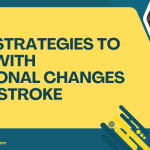Table of Contents
- Introduction
- Technique 1: Articulation Therapy
- Technique 2: Language Rehabilitation
- Technique 3: Cognitive-Communication Therapy
- Technique 4: Swallowing Therapy
- Technique 5: Group Therapy
- Conclusion
- FAQs
Introduction
Stroke can have a profound impact on a person’s ability to communicate. For many stroke survivors, speech therapy becomes an essential part of their recovery journey. It not only helps them regain their speech and language skills but also improves their confidence and quality of life. In this article, we will explore the top five speech therapy techniques tailored specifically for stroke survivors. Each technique offers unique benefits and can be adapted to meet individual needs. So, let’s dive in!
Technique 1: Articulation Therapy
Articulation therapy focuses on improving the clarity of speech. After a stroke, some individuals may struggle to pronounce words correctly, leading to frustrations in communication. This technique involves a series of exercises that target specific sounds or syllables.
Key Exercises:
- Sound Repetition: Practicing individual sounds repeatedly can help reinforce muscle memory.
- Minimal Pairs: Using pairs of words that differ by only one sound (e.g., “bat” vs. “pat”) can help patients distinguish between similar sounds.
Visual Element: Articulation Exercise Chart
| Exercise Type | Description | Frequency |
|---|---|---|
| Sound Repetition | Repeating individual sounds | 5-10 minutes/day |
| Minimal Pairs | Practicing similar sounding words | 10-15 minutes/day |
For more detailed information on articulation therapy, visit the American Speech-Language-Hearing Association (ASHA).
Technique 2: Language Rehabilitation
Language rehabilitation is aimed at restoring the ability to understand and produce language. This technique is particularly beneficial for stroke survivors who experience aphasia, a condition that affects language processing.
Components of Language Rehabilitation:
- Vocabulary Building: Using flashcards or word games to enhance vocabulary.
- Sentence Construction: Encouraging the creation of simple sentences to build complexity over time.
Visual Element: Language Rehabilitation Approach
| Activity Type | Purpose | Tools/Resources |
|---|---|---|
| Vocabulary Exercises | Enhance word recall and recognition | Flashcards, apps, word games |
| Sentence Building | Improve sentence formation and complexity | Writing prompts, visual aids |
For further insights on language rehabilitation, check out National Aphasia Association.
Technique 3: Cognitive-Communication Therapy
Cognitive-communication therapy addresses the cognitive aspects of communication, such as memory, attention, and problem-solving skills. Many stroke survivors may have intact speech but struggle with organizing their thoughts or remembering words.
Techniques Used:
- Memory Exercises: Simple memory tasks can improve recall.
- Organizational Strategies: Teaching patients to outline their thoughts before speaking can enhance clarity.
Visual Element: Cognitive Exercise Examples
| Exercise Type | Focus Area | Example Activity |
|---|---|---|
| Memory Tasks | Recall and recognition | Memory games, word association |
| Organizational Skills | Thought organization | Outlining stories or presentations |
For more on cognitive-communication therapy, visit Rehabilitation Institute of Chicago.
Technique 4: Swallowing Therapy
Swallowing difficulties, known as dysphagia, can accompany speech problems in stroke survivors. Swallowing therapy focuses on exercises and techniques to ensure safe swallowing.
Key Components:
- Swallowing Exercises: Strengthening throat muscles through specific exercises.
- Dietary Modifications: Adjusting food textures to make swallowing easier.
Visual Element: Swallowing Exercise Guide
| Exercise Type | Description | Frequency |
|---|---|---|
| Swallowing Techniques | Exercises to strengthen swallowing muscles | As advised by SLP |
| Dietary Adjustments | Modifying food texture (pureed, soft foods) | Continuous review |
For more information on swallowing therapy, refer to ASHA’s resources on Dysphagia.
Technique 5: Group Therapy
Group therapy provides a supportive environment where stroke survivors can practice their communication skills with peers. This technique fosters social interaction and reduces feelings of isolation.
Benefits of Group Therapy:
- Peer Support: Sharing experiences can boost morale.
- Real-life Practice: Engaging in conversations helps improve fluency and confidence.
Visual Element: Group Therapy Benefits
| Benefit Type | Description |
|---|---|
| Emotional Support | Helps reduce feelings of loneliness |
| Communication Skills | Provides opportunities to practice speaking |
To learn more about the advantages of group therapy, visit The National Stroke Association.
Conclusion
Speech therapy is a vital component of recovery for stroke survivors. The techniques outlined above—articulation therapy, language rehabilitation, cognitive-communication therapy, swallowing therapy, and group therapy—offer diverse approaches to help individuals regain their communication skills. Each survivor’s journey is unique, and these techniques can be tailored to fit their specific needs and goals.
FAQs
Q1: How long does speech therapy take after a stroke?
A1: The duration of speech therapy varies based on individual progress and severity of the stroke. Some may require therapy for weeks, while others may benefit for months or longer.
Q2: How often should a stroke survivor attend speech therapy sessions?
A2: Typically, stroke survivors attend therapy sessions 1-3 times a week, but the frequency may depend on the specific needs and progress of the individual.
Q3: Can family members participate in speech therapy?
A1: Yes! Involving family members in therapy sessions can enhance support and facilitate practice at home. Communication strategies can also be shared for better interaction.
Also look for:
For more comprehensive insights into the broader context of neuro care, you may find these resources beneficial:
These articles provide valuable information on the importance of timely interventions in neuro care, relevant for stroke recovery.






